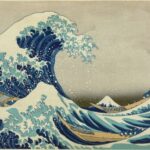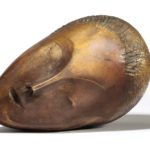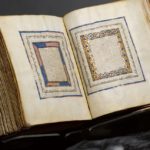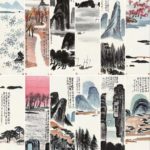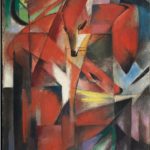
Los Angeles. – The Autry National Center is pleased to present “An Unspoiled Space: The West in the Eyes of Early 20th-Century Artists”. This ongoing exhibitions is the result of the reconfiguration of part of its Romance Gallery to prominently feature Western art from the early twentieth century. Focused on the unique, regional landscapes of the desert Southwest and coastal California, this installation explores the people and places that artists were drawn to as they sought to redefine the West by looking at who, what, and where artists chose to paint following the close of the historical frontier. An ongoing exhibition.
 Artists often saw life in the West in terms of its differences from the Eastern cities where they had previously lived. Whereas city life often left a person—as D. H. Lawrence put it—feeling “dead, dark, and buried,” the Southwest seemed to possess an uplifting visual aesthetic that enhanced daily living. Many believed that Pueblo Indian culture was driven by an innate artistic spirit, and their paintings of Native people reflect this belief. While Indian life preoccupied many artists in New Mexico, blossoming resort communities from Santa Fe to Southern California also became subjects. In Southern California, some artists documented the burgeoning social scene of Los Angeles, from the docks of San Pedro to the downtown plaza, whereas others celebrated the unspoiled beauty of the coast. As they created images that touted the visual landscapes and cultural life of these Western destinations, they promoted ideas about place that remain embedded within their modern identity.
Artists often saw life in the West in terms of its differences from the Eastern cities where they had previously lived. Whereas city life often left a person—as D. H. Lawrence put it—feeling “dead, dark, and buried,” the Southwest seemed to possess an uplifting visual aesthetic that enhanced daily living. Many believed that Pueblo Indian culture was driven by an innate artistic spirit, and their paintings of Native people reflect this belief. While Indian life preoccupied many artists in New Mexico, blossoming resort communities from Santa Fe to Southern California also became subjects. In Southern California, some artists documented the burgeoning social scene of Los Angeles, from the docks of San Pedro to the downtown plaza, whereas others celebrated the unspoiled beauty of the coast. As they created images that touted the visual landscapes and cultural life of these Western destinations, they promoted ideas about place that remain embedded within their modern identity.
In addition to the landscape of the West, artists were fascinated by its people. The Pueblo Indians and Hispanic families of Northern New Mexico were represented in individual portraits as the visual personification of their respective geographical settings. By focusing on Native and Hispanic cultures as immersed in traditions of craftsmanship, artists believed they were capturing values lost in the quest for industrial progress. The quest for a life spent in harmony with nature also fueled creative production across Southern California, where artists’ groups from La Jolla to the Bay Area created a supportive environment for art. Unlike their counterparts in New Mexico, however, California painters often overlooked the Native population in favor of a more exclusive focus on the private gardens and ocean resorts in works of landscapes and leisure that conveyed the relaxed, stylish qualities that California continues to export to the world.
The Autry National Center of the American West is an intercultural center and museum in Los Angeles, California that celebrates the diversity and history of the American West through three important institutions: the Southwest Museum of the American Indian, the Museum of the American West, and the Institute for the Study of the American West. The Autry’s mission is to explore the experiences and perceptions of the diverse peoples of the American West, connecting the past with the present to inform our shared future. All of the exhibitions, public programs, K-12 educational services and publications are designed to further this mission. Located at the Museum of the American West, the Wells Fargo Theater is also part of the center. The Southwest Museum’s 238,000-piece collection of Native American art is one of the most significant and representative of its kind in the United States, second only to the Smithsonian Institution National Museum of the American Indian. Comprising 14,000 baskets, 10,000 ceramic items, 6,300 textiles and weavings, and more than 1,100 pieces of jewelry, the collection represents indigenous peoples from Alaska to South America, with an emphasis on cultures from California and the Southwestern United States.

The Southwest Museum was founded in 1907 and is the oldest museum in Los Angeles. The Museum of the American West was established in 1988 by Gene Autry (as “Gene Autry Western Heritage Museum”) to explore and share the comprehensive story of the American West and the multiple cultures, perspectives, traditions, and experiences–real and imagined–that make the West significant. Its collection is composed of 21,000 paintings, sculptures, costumes, textiles, firearms, tools, toys, musical instruments, and other objects. The Institute for the Study of the American West is a research and publishing enterprise that produces and supports scholarly work in Western history and the arts. In 2002, the Women of the West Museum of Colorado merged with the Institute, infusing the Autry’s focus with a scholarly and educational emphasis on gender issues and women’s experiences in the American West. Visit the center’s website at … http://theautry.org
